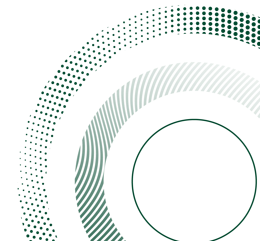קולות, מכונות וסובייקטים

תאריך
קולות, מכונות וסובייקטים | Voices, Machines and Subjects
ד״ר נדב אפל
ימי ג׳, 18:00-20:00
מה מקנה הקורס?
- היכרות עם הסוגיות התאורטיות העיקריות שעולות מבחינת הזיקה שבין מכונות, צלילים וסובייקטים.
- הבנה של יתרונותיה וחסרונותיה של פרספקטיבה מוכוונת-טכנולוגיה לבחינת יחסי אדם וקול.
- פיתוח היכולת לבחינה ביקורתית של אופן פעולתם של מערכי צליל שונים בעידן המודרני.
- יישום הגישות והתפיסות שנלמדו בקורס במסגרת עבודה מחקרית.
תקציר הקורס
הקורס ייבחן מתוך פרספקטיבות טכנולוגיות, סוציולוגיות ומוזיקולוגיות את אופיים ואופן פעולתם של מגוון מערכים מכאניים, אנלוגיים ודיגיטליים שמעורבים בייצור והפקת צלילים ו/או במניפולציה שלהם, בין אם במכוון (מערכות הגברה, כלי נגינה, אלגוריתמים לעיצוב צליל) או כתופעת לוואי (מכונות ומכשירים מסוגים שונים), וזאת בזיקה לנקודות ההשקה שלהם עם שחקנים אנושיים ומבנים של סובייקטיביות.
לסילבוס המלא
שיעורים לדוגמה:
קולות, מכונות והאקדמיה // מכונות תודעה: קולות וסובייקטיביות // מכונות חושים: מעבר לצלילים // מכונות זיכרון: קולות מן העבר // מכונות פנטזיה: קולות, זהות וחברה // מכונות מלחמה: קולות, דיכוי והתנגדות // מכונות בשר: קולות וגופים מזמרים //
ביבליוגרפיה:
גולן, ארנון ומעוז עזריהו. "רעש ועיצובו של מרחב עירוני מתפתח: תל-אביב 1940-1926", עיונים בתקומת ישראל 14 (2004), עמ' 96-73.
Biddle, Ian. “Vox Electronica: Nostalgia, Irony and Cyborgian Vocalities in Kraftwerk’s Radioaktivität and Autobahn”, Twentieth Century Music 1/1 (2004), pp. 81-100.
Chion, Michel. Audio-Vision: Sound on Screen, 2nd edn. (New York: Columbia University Press, 2019 [1994]).
Connor, Steven. "Edison's Teeth: Touching Hearing", Veit Erlmann, ed. Hearing Cultures: Essays on Sound, Listening, and Modernity, (Oxford: Berg, 2004), pp. 153-172.
Deleuze, Gilles and Felix Guattari. A Thousand Plateaus: Capitalism and Schizophrenia (London and Minneapolis: University of Minnesota Press, 1987).
Erlmann, Veit. "Descartes's Resonant Subject", Differences 22/2-3 (2011), pp 10-30.
Filippi, Daniele V. “Sonic Afterworld: Mapping the Soundscape of Heaven and Hell in Early Modern Cities,” in Ian Biddle and Kirsten Gibson, eds. Cultural Histories of Noise, Sound and Listening in Europe, 1300–1918 (Routledge, 2017)
James, Robin. The Sonic Episteme: Acoustic Resonance, Neoliberalism, and Biopolitics (Durham: Duke University Press, 2019).
Katz, Mark. Capturing Sound: How Technology Has Changed Music, revised edn. (Berkeley, Los Angeles, London: University of California Press, 2010 [2004]).
Krebs, Stefan. "Sobbing, Whining, Rumbling': Listening to Automobiles as Social Practice", in Trevor Pinch and Karin Bijsterveld, eds. The Oxford Handbook of Sound Studies (New York: Oxford University Press, 2012), pp. 79-101.
Provenzano, Catherine. "Making Voices: The Gendering of Pitch Correction and the Auto-Tune Effect in Contemporary Pop Music", Journal of Popular Music Studies 31/2 (2019), pp. 63-84.
Reynolds, Simon. "The Life of Auto-Tune: How Pitch-Correction Revolutionised Twenty-First-Century Pop, from Afrobeats to Atlanta Trap", in Futuromania: Electronic Dreams, Desiring Machines, and Tomorrow's Music Today (New York: Hachette Books, 2024), pp. 229-262.
Rice, Tom. "'The Hallmark of a Doctor’: The Stethoscope and the Making of Medical Identity". Journal of Material Culture 15/3 (2010), pp. 287-301.
Smith, Mark M. "Sound: So What?" The Public Historian 37/4 (2015), pp. 132-144.
Sterne, Jonathan. The Audible Past: Cultural Origins of Sound Reproduction (Durham: Duke University Press, 2003).
Volcler, Juliette. Extremely Loud: Sound as a Weapon (New York and London: The New Press, 2013).
Zagorski-Thomas, Simon. "The Stadium in Your Bedroom: Functional Staging, Authenticity and the Audience-Led Aesthetic in Record Production", Popular Music 29/2 (2010), pp. 251-266.
תאריך עדכון אחרון : 19/02/2025



